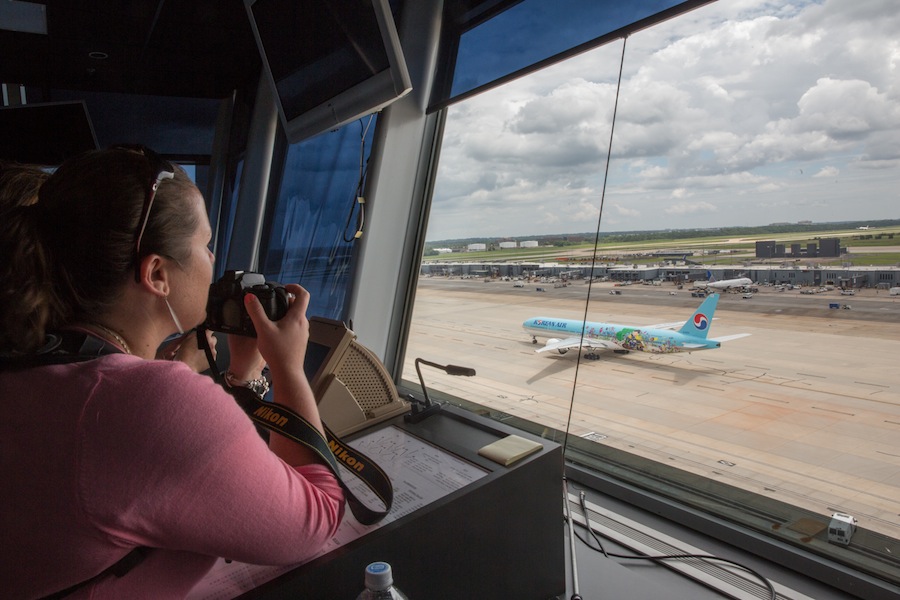For teachers, the question of how to best prepare students for future employment can be omnipresent. Employers face similar questions about how to hone the skills and capture the imaginations of future engineers, writers, artists and researchers.
The George Washington University’s Teachers in Industry Project (GW TIP), now in its seventh year, is helping bring those parallel agendas together.
Through GW TIP, a cohort of about two dozen Virginia middle and high school core content teachers serve in externships with local partners in a variety of fields—from the Loudoun County government to cybersecurity firms, polymer manufacturers, agriculturalists and makers of high-end tableware. In the process, they gain insight into their students’ potential futures—insight they are in a unique position to communicate.
The program runs from July 6 to July 24, and last Wednesday the cohort attended a signature kickoff event: a daylong behind-the-scenes tour of Dulles International Airport. In between watching maintenance be performed on an Aerotrain shuttle, climbing to the ramp tower to see how runway traffic is controlled, and even using the imposing spear-like boom on a fire engine to punch holes in a mocked-up jetliner wall, the teachers were already devising ways they could incorporate what they were learning into their classrooms.
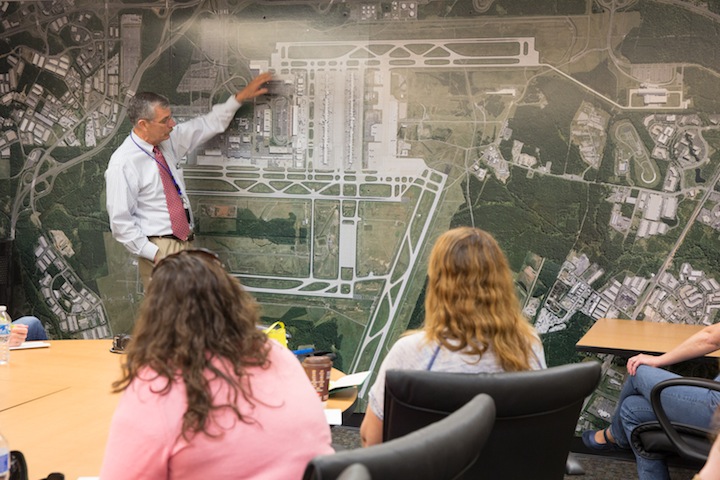
Bill Hall, deputy manager of airport operations at Dulles, guided the TIP cohort through the complex interlocking systems that keep the airport running. (William Atkins/GW Today)
Nathalia Hardy, a high school English teacher, is a longtime GW TIP participant and a leader of one of the small teams into which the cohort is subdivided. She said she has found unique ways to pass her new skills along to her students, including training them in geographic information system (GIS) mapping and then using that data to follow the paths of characters from their reading.
“To be able to bring something so relevant into the classroom is amazing,” she said.
The program has implications outside the classroom as well.
Loudoun County, where most members of this year’s GW TIP cohort teach, has one of the state’s best school systems, with a 95 percent on-time graduation rate and 73 percent of graduates earning advanced diplomas. As the area has positioned itself as a major tech corridor, its job market has become a goldmine for potential employees.
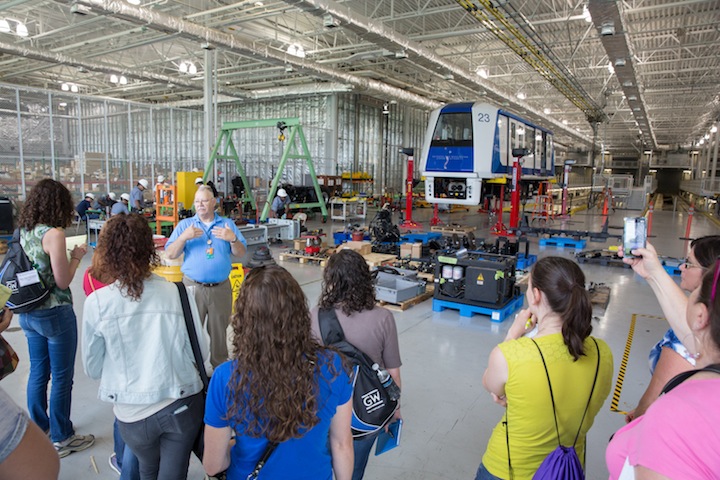
The group toured the Aerotrain facility and command center, where Dulles' underground transport shuttles are maintained. (William Atkins/GW Today)
But the county doesn’t retain its high-achieving graduates, said math teacher Sarah Conrad, who like Ms. Hardy is a team leader and returnee to the project.
“When [students entering the job market] think of tech, for example, they think of Silicon Valley,” she explained. “They don’t know how many possibilities are here.”
Being a part of GW TIP helps her open their eyes to those possibilities, she said. It also gives her a better sense of what employers are looking for in terms of skills. While her students are fluent in Snapchat and Instagram, they may not have practice with other kinds of work-relevant technology.
“I teach my kids to use stuff like collaborative software, because that’s what they’ll use in the workplace,” she said.
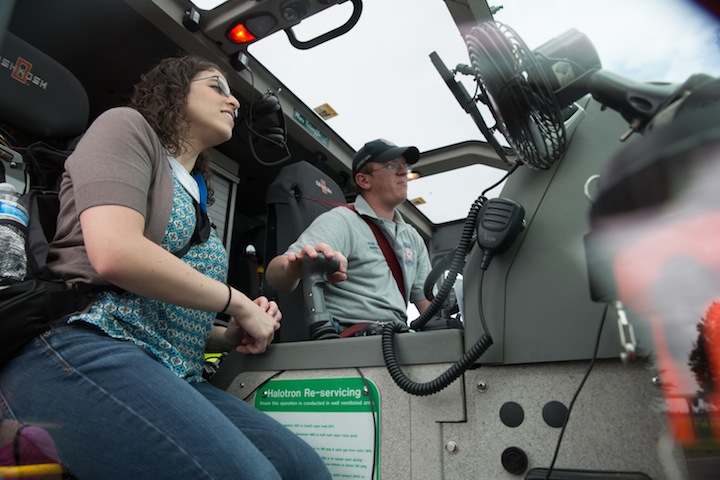
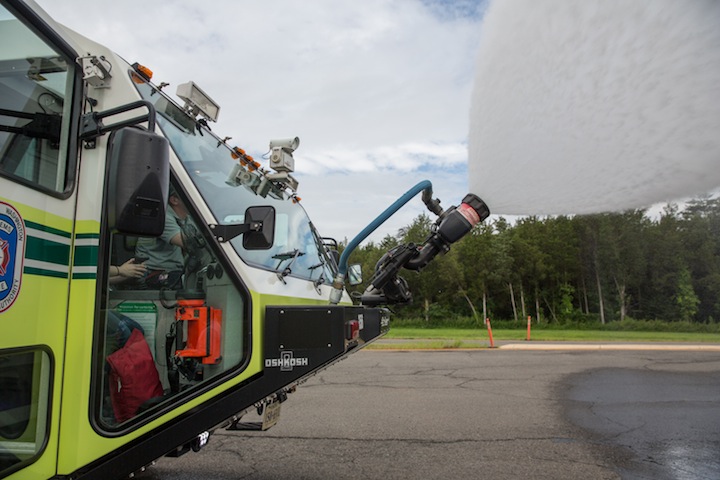
At the airport's fire station, teachers got up close and personal with emergency vehicles designed to battle catastrophe. (William Atkins/GW Today)
Paula Harper, GW TIP co-director and executive director of program development and management at GW’s Virginia Science and Technology Campus, said GW TIP is one effective way for businesses to communicate long term with the best and brightest employees of the future.
By creating student internships, she said, businesses can reach one potential employee. But “each of these teachers touches 150 kids,” she pointed out. “So, from a return-on-investment perspective, [businesses] should be addressing teachers as well as students.”
Teachers who have participated agree.
“My students and I are connected, professionally, in a way we really couldn’t have been otherwise,” Ms. Hardy said. One partner company recruited one of her students as an intern. Other students have benefitted from her connections at organizations like Girls in Technology.
“In the short term, GW TIP’s biggest benefit is to us—to the teachers—but in the long term, the biggest benefit is to the region,” Ms. Conrad said. “And teachers really care about the region.”


